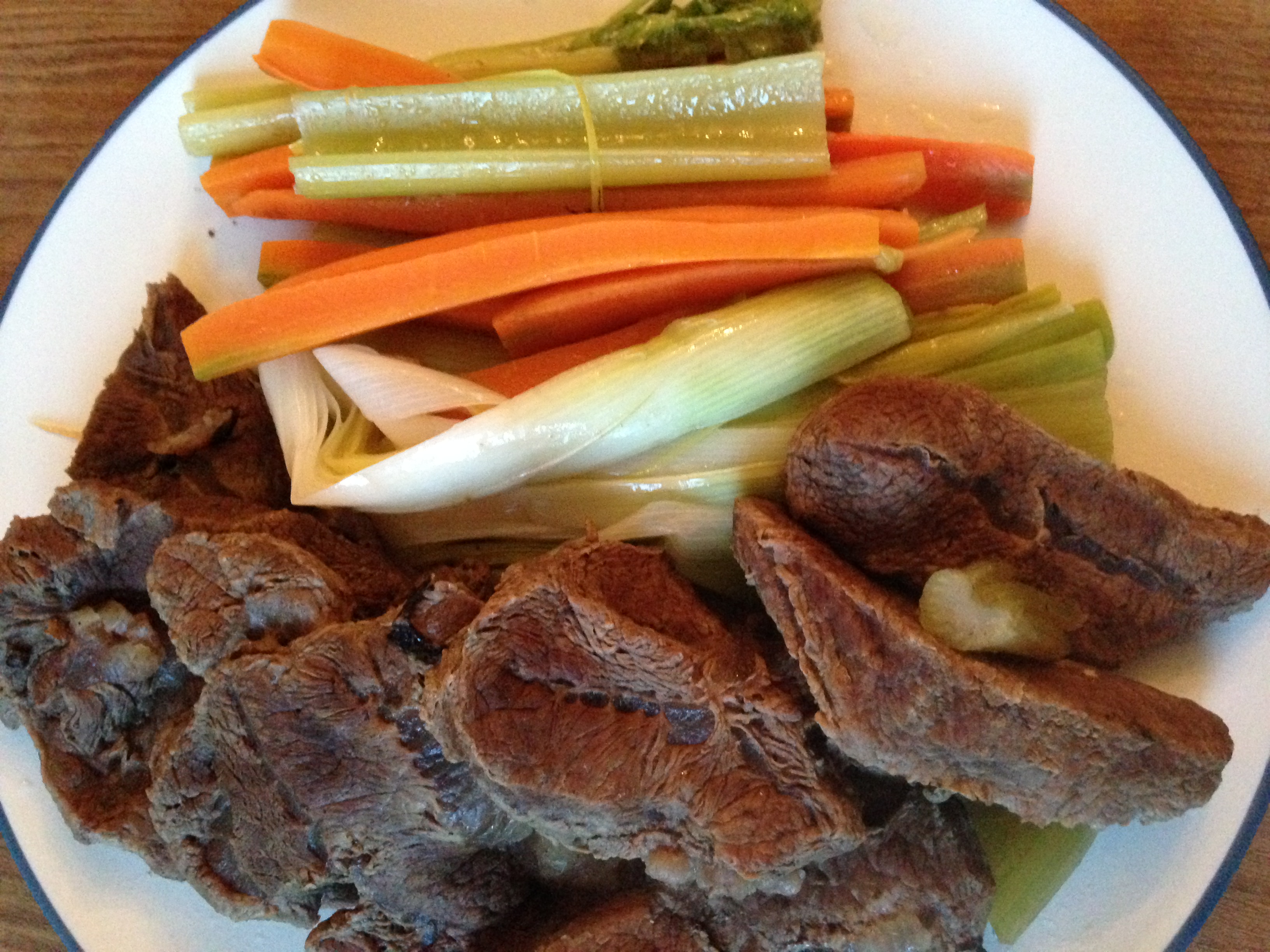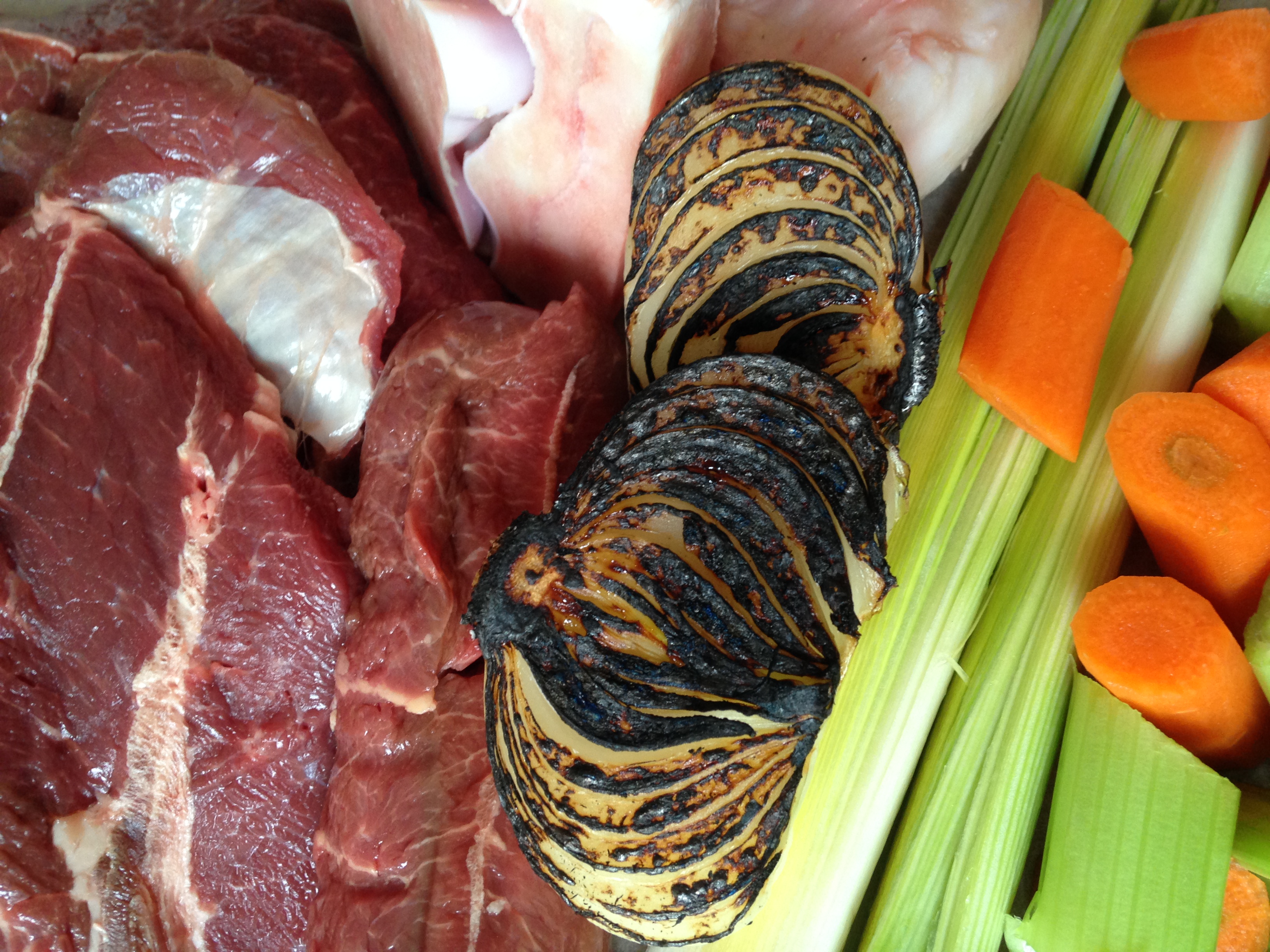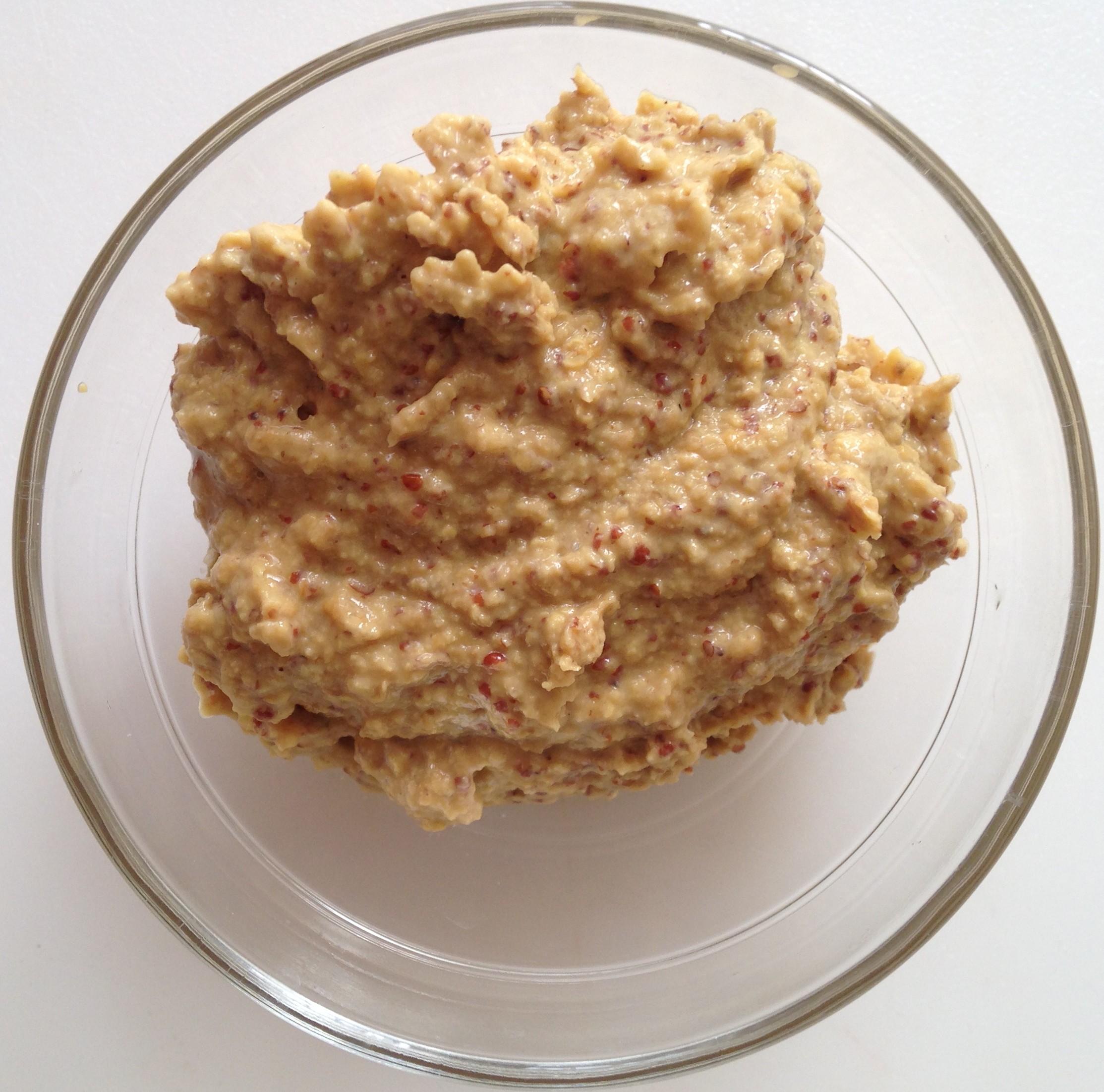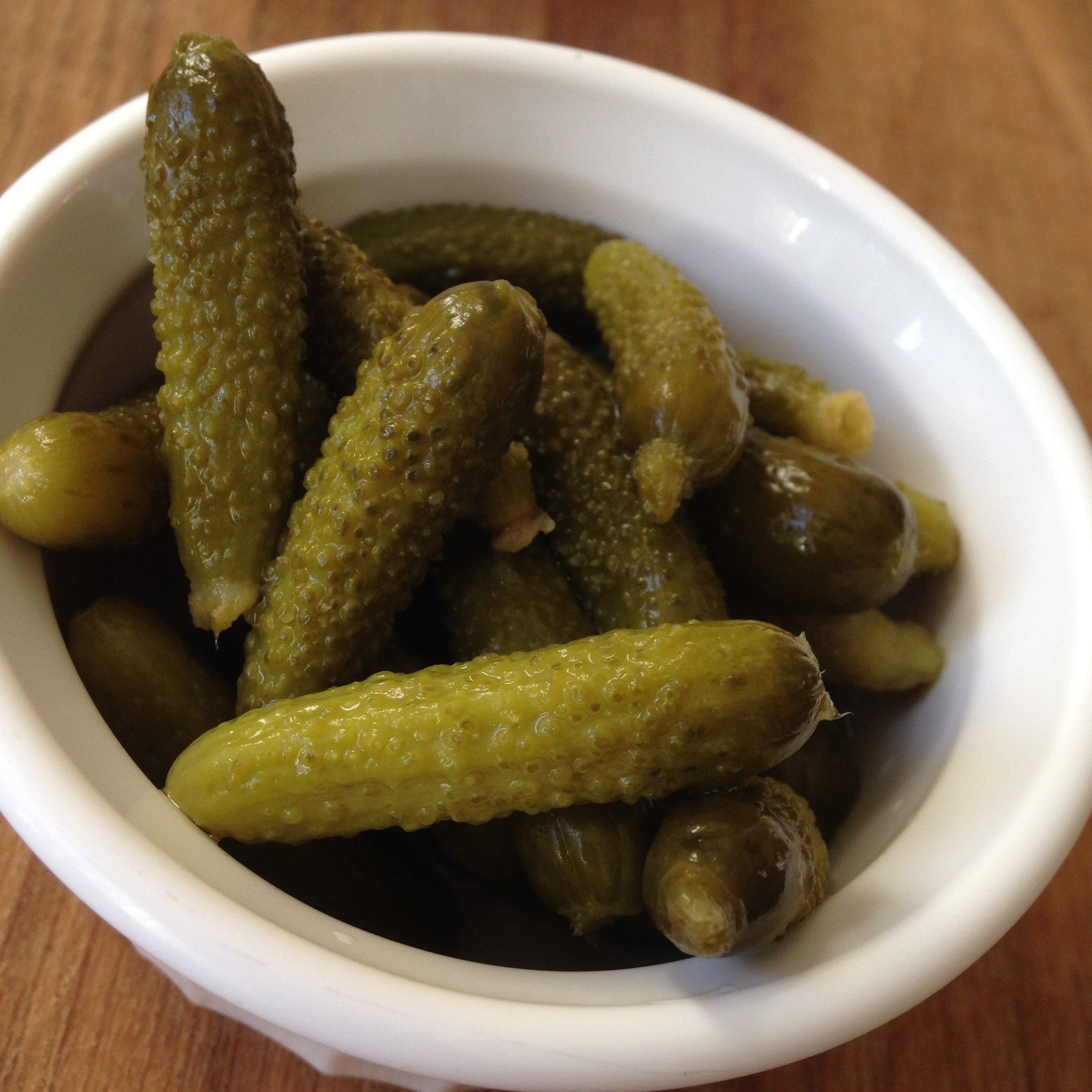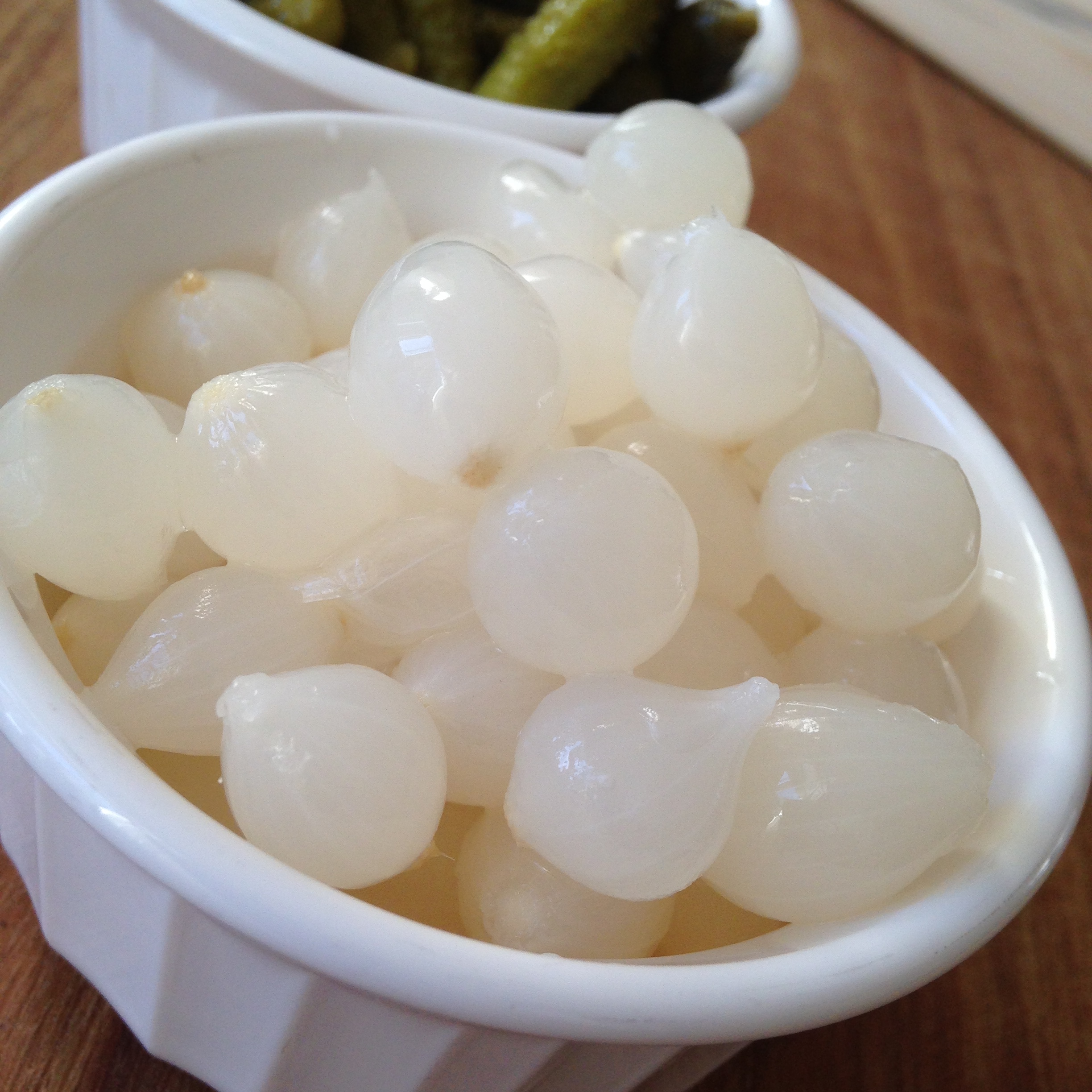Pot au Feu
As discussed before, successful braising is the pinnacle of cooking. Perhaps the most classic stove top braise is a Pot au Feu – gently braised meats and vegetables, served with pungent sauces and salty items, eaten family style. It is classic peasant food that is truly enjoyable.
Pot au Feu – A Different Braise
Usually when braising is done, the meat is browned to build flavor. This is not the case with pot au feu. The meat and vegetables are kept as plain as possible. It is up to the sauces and salty items that are served with the meat and vegetables to help bring out the best of cooked ingredients. This is not to say no color is added. Most Pot au Feu recipes, including the one here, call for the use of a burned onion to add color to the liquid during cooking. Essentially, a halved onion is heated over a flame or on a hot pan until it is burned on its flat side. The burned onion halves are added to the braise. The caramelized sugars on the burned surface of the onion are dissolved and color the liquid a nice brown. Pot au Feu may be the first use of caramel color.
Pot au Feu also breaks with braising tradition in that usually a sauce is created during the braising process. With Pot au Feu the braising liquid is water so a beef stock of sorts is created. This stock is usually served as a soup to start the meal. In terms of technique, the braising mantra of “low and slow” still is in play. The meat and vegetables are braised between 170F and 180F for a few hours until the meat is fork tender. The vegetables used in the braise can be discarded and fresh ones braised right before serving. Those that were used in the braise have usually given their all and do not taste like much.
- 2.5 lbs of beef short ribs
- 2.5 lbs of bottom round roast (pot roast) or brisket
- 4 lbs of beef knuckle or beef shank
- 8 carrots
- 2 medium leeks
- 4 celery stalks
- 1 medium sweet onion
- 4 cloves of garlic
- 1 bay leaf
- 1/2 oz of parsley
- 1/2 tsp black peppercorns
- about 12 Cups of Water
- Tie the short ribs together with butchers string.
- Peel the carrots. Cut 4 of the carrots into large pieces. Cut the other 4 whole carrots in half, tying them together in a bundle with butchers string.
- Using only the light green and white part of the leek, trim the end of the leek only enough so that the leeks stay together. Cut 1 leek in half and 1 in quarters. Tie the quartered leek together with butchers twine in a bundle
- Clean the celery stalks. Cut 2 in to large chunks. Cut the other 2 in thirds and tie together into a bundle with butchers string.
- Slice the onion in half. In a sauté pan, place them flat side down and raise the heat to high. Burn the onion halves. When they are burned remove them from the heat. They can also be burned directly over a gas flame or burner while being held with tongs.
- Make a bouquet garni by wrapping the garlic, bay, parsley and peppercorns in a piece of cheesecloth and tie it closed.
- Place the meat, knuckle, chopped carrots, chopped celery, halved leeks, burnt onions and bouquet garni in a very large pot. Cover with cold water.
- Turn the heat on high. As the water warms a scum will rise. Skim and discard the scum. Skim throughout.
- The goal is a gentle simmer. When the water reaches about 175F lower the heat and maintain a gentle simmer for about 3 hours.
- After 3 hours of cooking, add the bundled carrot, celery and leek. Make sure they are covered with liquid. Let simmer about 30 minutes until they are tender.
- After the bundled vegetables are tender, remove them from the pot along with the meat. Strain the liquid into a bowl and remove any at on the top. Season with salt and pepper. Discard the chopped vegetables and bouquet garni. Serve the seasoned liquid as a soup to start the meal.
- Serve the meat and vegetables with coarse salt, grainy mustard, sauce raifort, cornichon and even chimchurri.
- Any left over soup can be used as a stock or soup base for other meals. It can be stored in the freezer.
- There are variety of new cooking and finishing salts on the market, they are worth a try, too.
What to Serve with Pot au Feu?
It is the side sauces and accoutrement that make this meal interesting. Here are few suggestions for serving…
Grainy mustard, sour onions and cornichon are perfect accompaniments. Their boldness goes well with the braised foods. Another excellent accompaniment is horseradish or horseradish sauce (called Sauce Raifort). Horseradish sauce is easy to make. Just mix a heaping tablespoon of prepared horseradish into a cup of whipped cream. Add a dash of salt and pepper. Beat the whipped cream until it forms soft peaks. This is delicious with the meat and can be used as a nice sandwich spread, too!
Finishing Salts
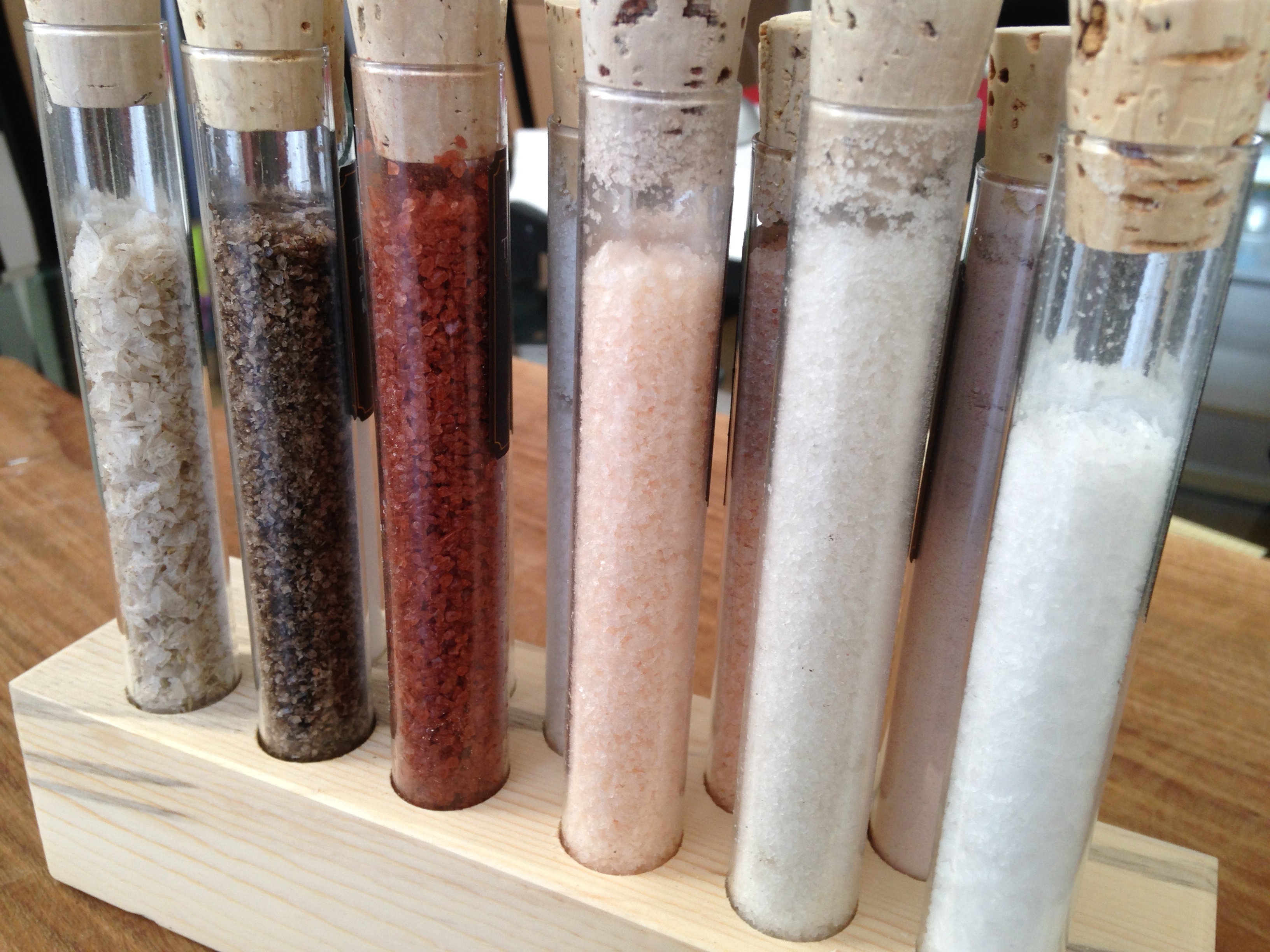
Typically, Pot au Feu would be served with coarse salt, too. This is a nice addition to the table. Now with the variety of different salts available this is a real game changer for a dish like Pot au Feu. Different salts from various places can bring very different flavors to this dish. This dish also gives a great opportunity to try a variety of different salts. These salts can be found at specialty stores and on the web and are worth a try.
I hope you enjoy!
Keep Eating! Keep Innovating!
Have you ever had Pot au Feu? What is your favorite Pot au Feu accompaniment? Let us know all about it in the comments or on Facebook.
The Culinary Exchange can also be found on Twitter, Instagram, Pinterest, Google+ and YouTube.
Come On! Follow Along!

